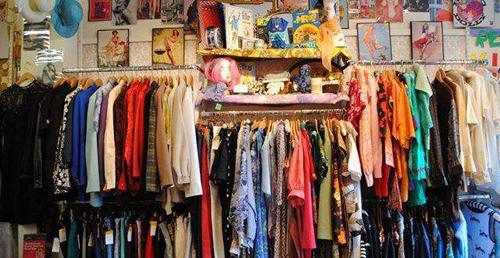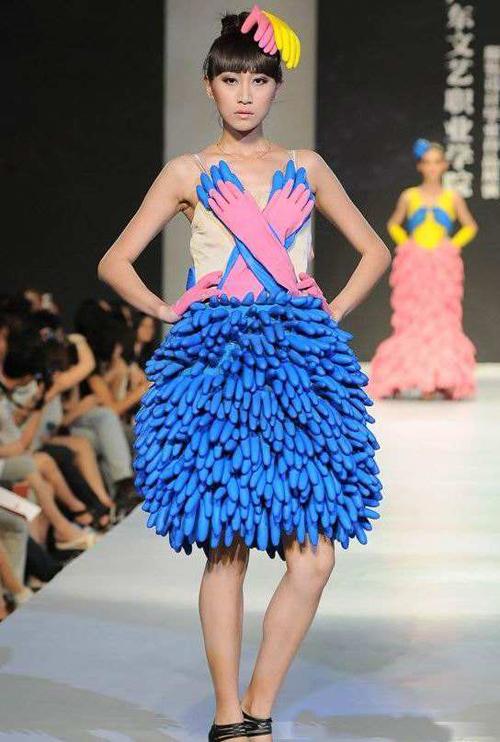"Green Defending War" hits the market to serve as an environmental protection storm?
Many printing and dyeing companies have actively invested in this "green battle". Because they firmly believe that only the power of science and technology can change the future of the company and save the development of the industry. At present, many of the many traditional enterprises are almost dead after being subjected to multiple internal and external factors such as pollution and high energy consumption. How do you survive and seek a way out for transition? Click to know immediately about cashmere sweater agent The Textile Printing and Dyeing Branch of the Textile Chamber of Commerce in Shunde District, Foshan City, Guangdong Province recently announced a notice letter to the dyeing enterprises in the Foshan area. Previously, Shunde District has closed down nearly 800 textile companies. According to data from the National Bureau of Statistics, as of November 2016, the number of textile enterprises with an operating income of more than 20 million yuan in China was 19,937, a decrease of 2,547 from the number of 22,484 textile enterprises in 2011. After the formal implementation of the new environmental protection law, known as “the strictest in historyâ€, the pressure on the textile industry in terms of energy conservation and environmental protection has continued to increase. According to the new regulations, the direct discharge of chemical oxygen demand (COD) from textile companies needs to be controlled at 80 mg/l. This is because after the COD straight-discharge standard was increased to 100 mg/l in 2013, the threshold for sewage treatment in the textile dyeing and finishing industry was again raised. As we all know, printing and dyeing industry is a high energy consumption, high water consumption, high pollution industries. Wastewater discharge from the textile industry ranks in the forefront in the discharge of wastewater from 41 industries across the country, and the wastewater discharge from the printing and dyeing process accounts for more than 70% of the textile wastewater discharge. According to the “National Industrial Pollution Prevention Report in Key Industries†published by the China Environmental Science Press, the average pollutant content of printing and dyeing wastewater in China is 2-3 times that of foreign countries, and the water consumption is as high as 3-4. Times; At the same time, printing and dyeing wastewater is not only the main pollutants in the industry, but there are problems in the sludge treatment of printing and dyeing wastewater. Click to learn about cashmere sweater production Under the pressure of continuous decline of the national economy and industrial operating environment, China's textile printing and dyeing industry has also ushered in the situation of “slow industrial economic growth, continuous year-on-year growth rate decline, and insufficient investment momentumâ€. A traditional industry with an annual output value of several billion yuan has almost been sentenced to death after multiple internal and external factors such as pollution and high energy consumption. How do you survive and seek a way out for transformation? On December 25, 2016, the Environmental Protection Tax Law of the People's Republic of China was passed by the Twenty-fifth Session of the Standing Committee of the Twelfth National People's Congress and will be implemented on January 1, 2018. The environmental protection tax law passed this time will start with the use of taxation leverage to reduce emissions. It is reported that, in accordance with the principle of legislation, the environmental protection tax is "tax-negative translation", "translation" from the sewage charges to environmental protection taxes, consistent with the current sewage charges, and the objects to be collected are air pollutants, water pollutants, solid wastes, and noise. The introduction of new regulations will also force corporate transformation. As an environmentally sensitive and resource-dependent traditional manufacturing industry, the textile industry is closely related to the implementation of green manufacturing projects. The next five years will be a crucial period for implementing the strategy of building a strong nation, and it will be an important five years for the transformation and upgrading of the textile industry. Promoting green growth is the common choice of the major economies in the world, and it is also an inevitable way to enhance international competitiveness. Click to know how to customize cashmere sweater This is not a frustrating move under the increasingly stringent environmental protection policies, but it is the only way for enterprises to upgrade and transform. Under such a storm of environmental protection, some companies have already taken the lead in green development. For example, "controlling the source, grasping both sides, and mentioning the middle" is the ecological development idea of ​​everything. The source of control requires the optimization and integration of supply chain resources. When selecting raw materials and chemicals, it strictly selects environmental friendly dyes and auxiliaries. Since 2004, it has implemented the environmental management of dyeing and chemical additives to ensure that hazardous substances are achieved by 2020. zero emission. Wensli has formulated a series of green supply chain specification systems to conduct comprehensive assessment of suppliers' ecological supply chains. Both sides demand attention to product design and product development. Wansli has a national-level technical center and a provincial-level industrial design center. 276 R&D teams and nearly a hundred designers team support the R&D and design tasks of Evergreen’s green transformation. In the middle of the request to retain the core of the digital printing technology, the use of Italian air flow than the small bath washing machine, physical soft finishing machine, saving water 30%, reducing the amount of chemical additives 10%. Everyone also carried out material balance, water balance and energy balance audits and cleaner production audits, and focused on using energy-efficient water equipment to install three-level metering devices to control the energy consumption of the equipment. After these years of equipment transformation and introduction, the advanced equipment in the park accounted for more than 80%, and automation, information technology and process technology have reached the leading level in the same industry. In fact, in the textile industry, eco-friendly companies like Wansli are not alone. On December 23, 2016, Textile Light’s promotion of key achievements in the key technology of green fiber manufacturing in the chemical fiber industry was held in Haiyan. The leaders of the chemical fiber industry throughout the country, as well as academicians, experts, and representatives from universities and research institutes, attended a total of more than 260 participants. Haiyan Haili Environmental Protection Fiber Co., Ltd. declared the “Key Technology and Equipment R&D for High Quality Differentiated Recycled Fibers†project as a key promotion project. Haiyan Haili has established its own PET bottle recycling and processing system. Haili has begun to receive certain results in certain aspects and has established a green image in the surrounding area. The “Rapid Catalysis†developed by companies such as Suzhou Hongyu Energy Conservation and Emissions Reduction Engineering Co., Ltd. can achieve a reuse rate of over 70%, and has been promoted and used by several 10 companies in Jiangsu printing and dyeing enterprises, becoming the key to promoting transformation and upgrading. The company and the Southeast University have jointly solved four problems: “alkaline adjustment in decolorization processâ€, “iron interference in reuse waterâ€, “high ion intensity, excessive salt concentration,†“COD and other pollutant interferences†to achieve efficient utilization of water. It is understood that the use of this technology can achieve multiple effects such as technology upgrades, cost savings, and energy saving and emission reduction in investment, equipment operation, and production and operation. Many printing and dyeing companies have already actively participated in this "green battle". Because they firmly believe that only the power of science and technology can change the future of the company and save the development of the industry. The textile industry is now at an extremely difficult time of development, not only being squeezed by the original textile giants, but also facing competition from emerging countries in economic development. Click to know how to customize cashmere sweater With the continuous tightening of national environmental protection policies, printing and dyeing companies must rely on the cooperation between production, education and research to emerge from the new path of technological innovation. In order to establish a model enterprise with visibility and operability in the textile industry, the China National Textile and Apparel Council, upon the recommendation of a professional association and self-declaration by the enterprise, has passed an expert review, field research, and selection of superior and excellent ones. Co., Ltd., Zhejiang Shengfa Textile Printing and Dyeing Co., Ltd., Jiangsu Jujie Microfiber Textile Technology Group Co., Ltd., Tangshan Sanyou Xingda Chemical Fiber Co., Ltd., Yiwu Huading Nylon Co., Ltd., Hangzhou Nippon Nonwoven Co., Ltd., Shunde, Foshan City Eight companies such as Caihui Textile Co., Ltd. and Jiangsu Fenghua Textile Finishing Technology Co., Ltd. are “2016 National Energy Saving and Emission Reduction Technology Application Demonstration Enterprise in the Textile Industry†granted by Hangzhou Benma Chemical Fiber Spinning Co., Ltd. and Jiangsu Flumets Environmental Protection and Energy Saving. New Materials Co., Ltd., Liaoning Shengda Chemical Fibre Co., Ltd., Fujian Changle City Lifeng Textile Co., Ltd., Guangdong Qiusheng Resources Co., Ltd., Hangzhou Benma Chemical Fibre Spinning Co., Ltd. and other five companies "2016 national comprehensive utilization of resources in the textile industry Technology Application Model Enterprise" title. Whether it is a printing and dyeing enterprise or a printing and dyeing cluster, Shaoxing and Shishi have all increased their environmental protection efforts and speed, making green printing and dyeing a common practice. The environmental protection issue is not a problem that can be solved and realized by a company and an industry. Only by combining multiple aspects, integrating resources, and integrating strength, can one place be punched to realize the sustainable and healthy development of the industry. Want to learn more about cashmere sweater: accessible Pay attention to WeChat public number "Cashmere sweater industry platform" to learn more about cashmere sweater information Bodysuit Femme,Hollister Bodysuit,Long Sleeve Bodysuit,Slimming Bodysuit Top SHAOXING LIDONG TRADING CO.,LTD , https://www.suejiangarments.com



